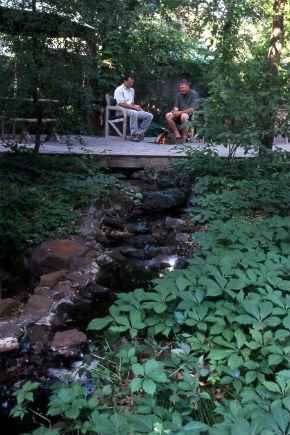Wildscapes: Best of Texas Backyard Habitat Certification
What are the essentials?

The Best of Texas Backyard Habitats Program is a joint effort of the National Wildlife Federation and Texas Parks and Wildlife Department that allows Texans to certify under both programs with a single form. Best of Texas Backyard Habitat took the best of the two individual programs and pushed the bar a little higher, challenging Texas wildlife gardeners to create a habitat that seeks to maximize wildlife benefits and highlight sound conservation stewardship within the bounds of urban restrictions.
We are not accepting new applications for Wildscape Certification at this time, but we encourage you to certify your landscape through the National Wildlife Federation’s Certified Wildlife Habitat program.
Previous certification required:
- An obviously native plant habitat. Volunteers will not count plants to see if you have a majority of native plants. If there are more than two plants listed in the Invasive Exotic Species section of this webpage, we will reserve the right to deny certification as a Best of Texas Backyard Habitat.
- Food must be available year round. Feeders alone will not be accepted but should there be a time period when food is not available from plants, feeders would then be required.
- Water MUST be provided in a way that is useable and reliable for the animal. Water should be kept fresh.
- You must be taking active measures to control cats, House Sparrows and English Starlings on your property. This could include, but is not limited to:
- Keeping your cat indoors and encouraging your neighbors to do the same.
- Monitoring nest boxes for evidence of House Sparrows or English Starlings.
- Using feeds that sparrows and starlings dislike, etc.
- You must be participating in at least six of the following resource conservation measures:
- Establishing a rain garden or buffer to filter storm water
- Using drip soaker hose instead of sprinkler
- Xeriscape plantings
- Irrigating sparingly and only in early mornings or evenings
- Planting deciduous trees along the southern exposure of the house
- Eliminating chemical use
- Capturing roof rainwater
- Mulching
- Reducing or eliminating lawn areas
- Removing invasive exotics
- Keeping your cat indoors
- Composting yard and food waste